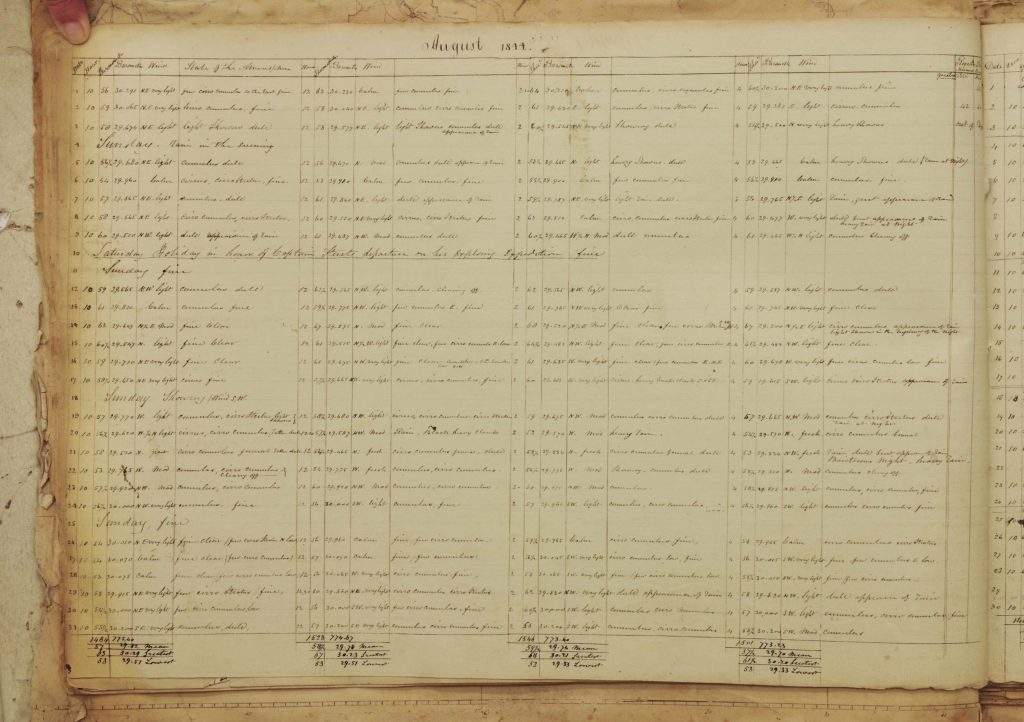creatING australia’s longest daily weather recordS
To understand extreme conditions in Australia – such as drought, bushfires, heatwaves and floods – we need to look back at these events in the past. But there are a few missing pieces of the puzzle in Australia’s early weather records.

This is where citizen scientists come in. Thousands of volunteers around the globe have participated in our data rescue projects on the citizen science platform, Zooniverse.
Our previous volunteer projects involved transcribing observations from handwritten journals (for example, pictured right) to help link together our country’s historical climate with modern records.
From 8 September to 24 November 2020, Zooniverse volunteers helped us to develop a daily weather record for Adelaide back to 1838. Read more about how volunteers helped to create the longest daily weather record for Adelaide here.
And, from 20 April to 1 July 2021, we ran another even larger citizen science project looking at journals from Perth for the period 1880 to 1900, taking the daily records back to 1830. Read more about the transcription of Perth’s longest daily weather record here.
There’s also more detail on our citizen science projects in the video below.
While we don’t currently have any more Zooniverse data rescue projects coming up, you can sign up to our e-newsletter to stay up-to-date with our latest results, research and other news.
Subscribe to our e-newsletter
We send an email every few months with our latest news, research and citizen science weather rescue projects. Click here to sign up and stay informed.
OCCASIONAL volunteer WORK
We do have occasional ad hoc work come up that volunteers can help us with. As a volunteer, you might explore fascinating historical records and collections including:

- handwritten weather records;
- early newspapers;
- photographs;
- artworks;
- correspondence and accounts from early settlers; and
- other accounts of colonial scholars.
You’ll be searching these historical records to uncover valuable information about Australia’s turbulent climate history. Volunteers are digging up detailed accounts of floods, drought, locust plagues, bushfires, heatwaves, snow falling in Sydney, and there’s so much more just waiting to be discovered!
You can chose to work on high priority tasks or we can help you find a task that suits your personal interests. Email us at info@climatehistory.com.au explaining a little about your skills and experience, and we’ll get back to you if we have any work that might be of interest you.
Becoming a volunteer Text Corrector at the National Library of Australia is another great way to help with our research. Find out how you can contribute here.
